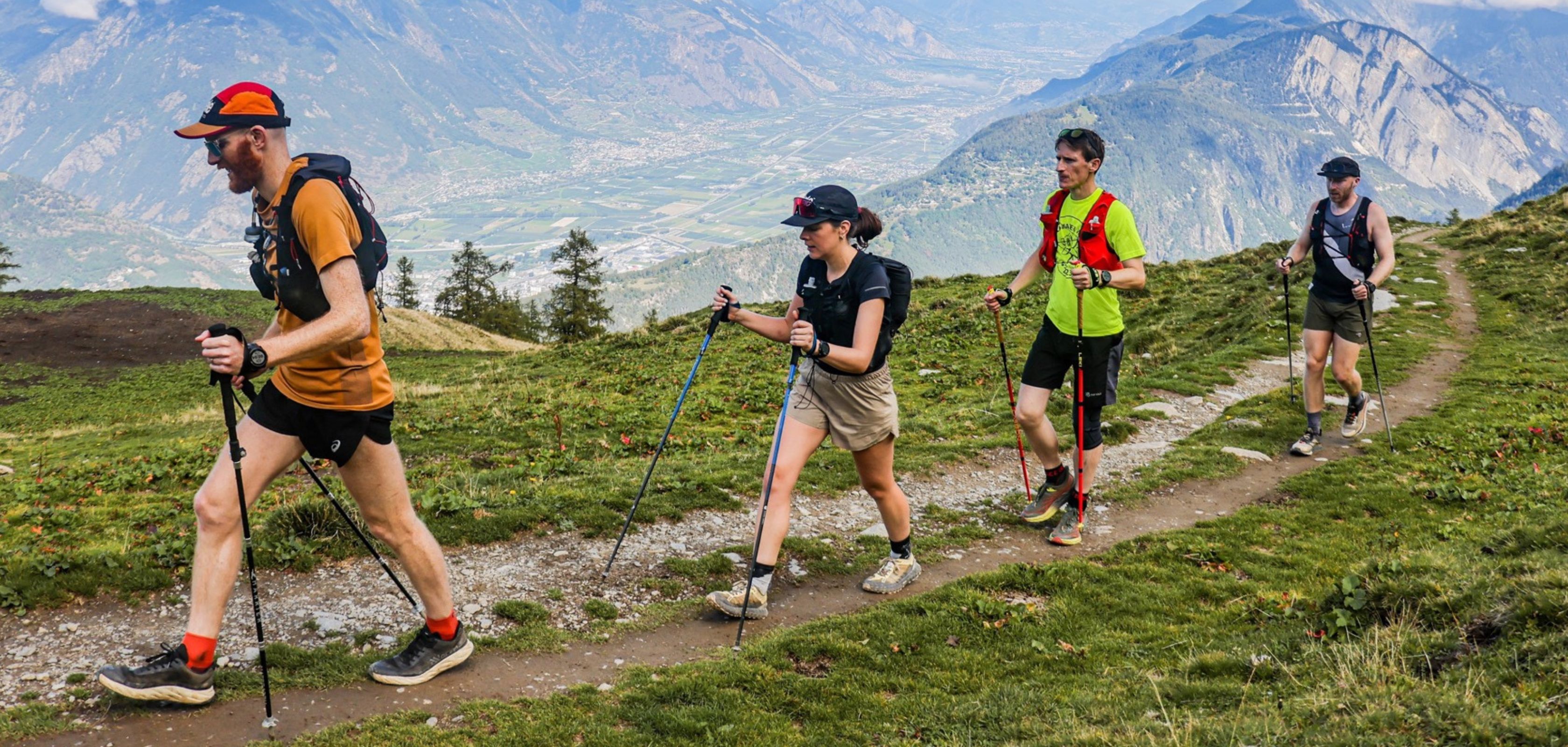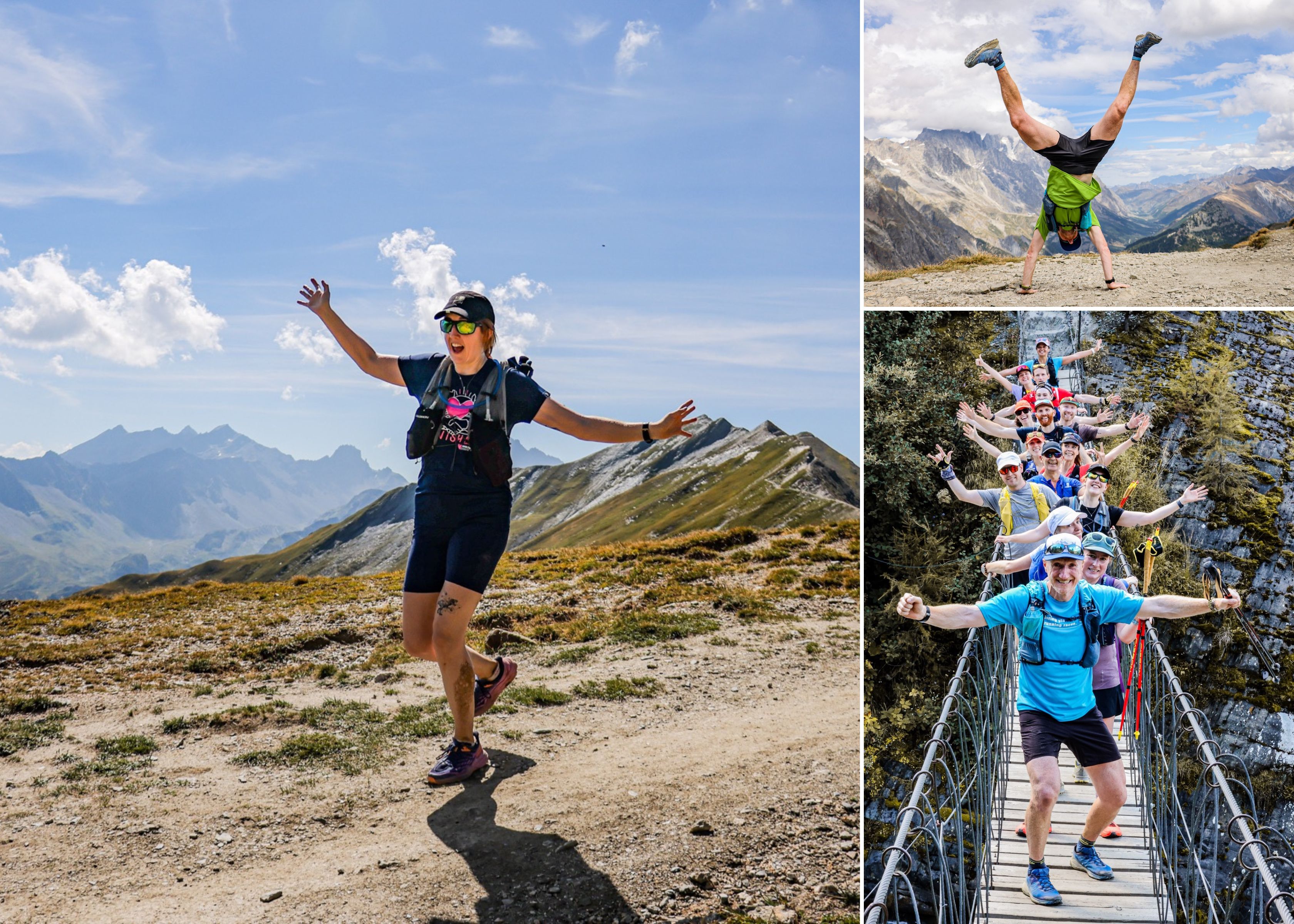Navigating The Peaks
Six Pro Tips For Safe Mountain Exploration
Breathtaking views from atop a mountain ignite feelings like no other. A place where you can challenge yourself, the moment of ascending the peak is both rewarding and invigorating. But as with any adventure, safety is paramount.
Simon James is not just the founder of trail running adventure company, Run The Wild, but he’s also a qualified International Mountain Leader & Mountain Running Guide. Here, he lists his pro tips for staying safe.
The mountains grant us a sense of freedom and a place to discover more about ourselves. Through inspiring us, they provide an arena for adventure.
As with any adventure there’s a danger risk - and of course, without risk there’s no adventure. So before getting out there, we need assess the likelihood of danger and have a plan for mitigating it; whether you’re heading out on a morning hike or multi-day expedition. Here are my six tips for staying safe in the mountains so you can have the best experience possible.
1. Know Your Objective
For me, this is the most exciting part of the adventure planning phase. Your objective needs to be well thought out and realistic.
When I’m planning an adventure, I create multiple objectives; because often, the mountains will dictate what you can and can’t do. Which may mean that a certain goal isn’t achievable.
Remember nothing is for certain in the mountains. You may have to turn back if the conditions on the day prevent you from exploring further.
2. Know Your Plan
Often, the easiest part is jumping in the car and starting your adventure. However, without a plan you’re opening the door to many unknown hazards and could miss out incredible experiences.
Here are the questions I’ll ask myself in the weeks leading up to my mountain adventure:
- Where are you going and for how long for?
- What’s the route?
- What are your back up plans and safety measures?
- Are you travelling solo?
- If you’re heading out with a group, what level of experience do they have and what's your experience?
- What training will you need to prepare?
- What kit will you need to bring?
Be honest with yourself and consider these elements together with your own experience, fitness and skills. Always do your research by searching online, reading guidebooks and talking to friends, using what you've found out to create a detailed plan. Consider that your plan may need to change throughout the course of your adventure. Always leave a copy of the route with a friend and specific timings in case of an emergency.
3. Know Your Kit
It’s essential that you have everything you need for your chosen adventure. It’s important to pack as light as possible but without compromising on your own safety.
Here some points to consider when making your mountain kit list:
- Synthetic and layered clothing is lightweight and moisture-wicking, keeping you warm while drying quickly when wet.
- Remember safety equipment such as a first aid kit, spare batteries, a bivvy bag, spare food and a whistle.
- Prepare kit a week before and have a kit tick list to avoid forgetting the essentials. That way there's time to reassess and replenish missing kit.
- I pack everything in advance to check my pack feels comfortable and isn't too heavy.
- I'll repack my rucksack again to ensure everything is there and I know where to find it.
Lastly, test everything before a mountain adventure so you know how it works, and pack spares if relevant. A back-up head torch that’s effective is an essential. Hopefully, you’ll never need to use your spare kit, but this is your adventure and you should be able to look after yourself. Being self-sufficient is part of the fun and your responsibility.
4. Know The Weather
The weather is one of the most unpredictable and dangerous hazards when you’re in the mountains. High winds, thunder and lightning, low temperatures and extreme rainfall can be detrimental to your safety.
A common misconception is just because it’s warm and sunny at the bottom of the mountain, doesn’t mean conditions will be favourable at higher altitudes. So you should never leave your warm layers behind. Generally, 1°C is lost for every 100 metres gained in altitude, and expect the winds to pick up too. Remember as you tire on the way, your body will find it more difficult to stay warm.
I look at three weather apps before summing up the conditions. The weather radar is also a useful tool for estimating where the weather is coming from and how quickly it’s changing. Predicted thunderstorms are dangerous as are high winds, which may mean you’ll have to delay your adventure or call it off entirely. If it looks dangerous, it probably is; so reschedule on a better day.
You should also be aware of the signs and risks of hypothermia, frostbite, heat exhaustion, heat stroke, dehydration, and sunburn, taking the preventative measures to avoid them.
5. Know Yourself
If you’re new to the world of mountain adventures, then it could be wise to consider hiring a guide or going on a course beforehand.
Assess your fitness, experience and skill level. It takes years of experience to understand the way mountains work and you never stop learning.
At Run the Wild, our alpine guides are qualified so you can enjoy the trails and focus on the fun side of adventure. We also teach you skills such as map reading and movement techniques for trails — check out our workshops to discover the skills you’ll learn.
It’s also worth looking at the national mountain centres which offer great courses for budding mountaineers. We all need to start somewhere and it’s best to get it right from the beginning.
6. Know Your Environment
My final tip for staying safe in the mountains is to stay alert and aware of your surroundings, your condition, and your companions. Pay attention to the trail, terrain, weather, and wildlife. Most mistakes happen when people lose concentration and don’t notice the path they needed to take, the weather changing, or that they haven’t drunk any water — the list goes on!
To mitigate these risks, keep track of your time, distance, location, and your progress. Utilise your map, compass, GPS, and smartphone apps to help you orient yourself. Listen to your body and remember to take breaks, so you can rest, eat, drink water and adjust your clothing as needed.
Lastly, put your headphones away and enjoy nature at its best, chat to your companions and you’ll not only be safer but embrace your adventure to its fullest.
Thanks for sharing your expertise with us, Simon! Remember to check out the courses led by Run The Wild to learn invaluable adventure skills, meet like-minded explorers and create unforgettable memories.
Have you been inspired to take to the mountains? If you’re headed out, make sure you have the kit you need for the best experience possible. Speak to one of our kit specialists in-store, or book a rucksack and boot fitting to find the perfect fit, allowing you to explore with confidence.
You may also like:

Let us know you agree to cookies
We use marketing, analytical and functional cookies as well as similar technologies to give you the best experience. Third parties, including social media platforms, often place tracking cookies on our site to show you personalised adverts outside of our website.
We store your cookie preferences for two years and you can edit your preferences via ‘manage cookies’ or through the cookie policy at the bottom of every page. For more information, please see our cookie policy.






